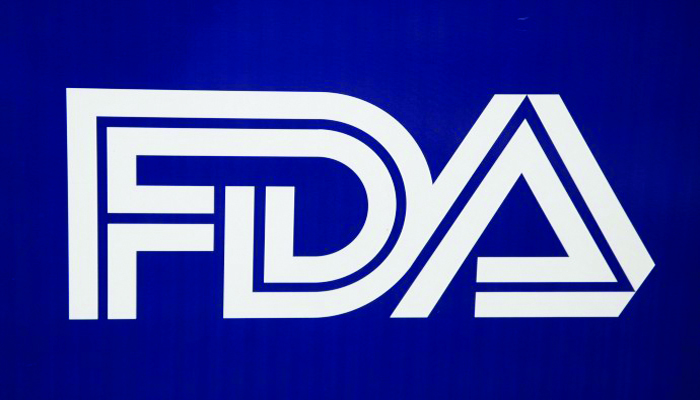Report 97: Pfizer Obscured Myocarditis Safety Signal Specific to Young Men. FDA Did Not Notice Until May 2021.
by Joyce Allen, RN, and Linnea Wahl, MS, Daily Clout:

Career scientists are struggling with attention to detail in fulfilling their vaccine safety duties. Their conclusions, marked by errors and oversights, have led to lives lost and debilitating disorders, as proven by the government scientists’ own review documents.
In spring 2021, the US Food and Drug Administration (FDA) granted emergency use authorization for the Pfizer mRNA COVID-19 drug to be given to children older than 12 years and renewed its approval for use in adults. These approvals came despite the fact that FDA officials had reviewed and signed off on data proving that Pfizer’s mRNA drug was dangerous, especially to young men and boys. Did FDA employees miss important safety signals? Given their mistakes, are these government employees the right people to be making life or death decisions affecting the well-being of Americans?
TRUTH LIVES on at https://sgtreport.tv/
The FDA Professionals
Consider this description from the FDA website (https://www.fda.gov/vaccines-blood-biologics/vaccines/emergency-use-authorization-vaccines-explained) that defines the job description of the professionals evaluating vaccines for emergency use: “The FDA staff are career scientists and physicians who have globally recognized expertise in the complexity of vaccine development and in evaluating the safety and effectiveness of all vaccines intended to prevent infectious diseases. These FDA professionals are committed to decision-making based on scientifically driven evaluation of data. FDA staff are like your family—they are fathers, mothers, daughters, sons, sisters, brothers and more. They and their families are also directly impacted by the work that they do, and are exactly who you want making these important public health decisions for the United States.”
Consider that an FDA regulatory specialist provides “authoritative guidance and consultation regarding current good manufacturing practices (CGMPs) for pharmaceutical manufacturing in the context of on-site inspections; and, supports the human drug surveillance program through qualitative and quantitative regulatory assessments of quality metrics, quality management maturity, pharmaceutical quality system effectiveness, and other related quality intelligence available throughout the product lifecycle.” (https://www.fda.gov/media/175128/download) A drug surveillance program attempts to identify, evaluate, and address safety issues, or safety signals, related to new drugs (https://www.fda.gov/media/130216/download). A safety signal is “information arising from one or multiple sources that suggests a new potentially causal association or a new aspect of a known association between an intervention and an event or set of related events, either adverse or beneficial, judged to be of sufficient likelihood to justify verificatory action.” (https://www.ncbi.nlm.nih.gov/pmc/articles/PMC9334375/)
Now consider these two examples of how the “globally recognized expertise” of FDA staff ignored safety signals that brought misery and even death to young men who developed heart disease after taking Pfizer’s mRNA COVID-19 drug.
Missing the Signal in Monthly Safety Data
From December 2020 until September 2021, Pfizer collected data on the safety of its mRNA COVID-19 drug and submitted summaries of the data to FDA each month. FDA employees, in turn, reviewed the Pfizer data summaries and prepared checklists documenting their reviews. FDA has released the data summary checklists for data from March through August 2021. These seemingly simple checklists reveal much, as discussed below.
But first, who are the FDA employees who prepared and reviewed these checklists?
- Deborah L. Thompson, MD, is documented as the monthly reviewer on each checklist during this six-month interval. Dr. Thompson is a preventive medicine physician in Silver Spring, Maryland. She received her medical degree from SUNY Upstate Medical University and has been in practice for more than 20 years. Her specialties include public health. (https://www.doximity.com/pub/deborah-thompson-md)
- Ramachandra Naik, PhD, professional biochemist, is the regulatory information specialist to whom Dr. Thompson submitted her checklists of data from March through June 2021. Dr. Naik’s stated credentials include over 10 years of experience in biochemistry, molecular biology, immunology, cell biology, protein biology, with special strength in experimental design, technology development, troubleshooting, and cross team coordination. His biography documents research experience in handling and analysis of DNA libraries, biomarker interactions, as well as experience with bacteria, cell/tissue culture, and yeast/fungi. (linkedin.com/in/ramachandra-naik-823a824b)
- Laura Gottschalk, PhD, is the regulatory information specialist who reviewed Dr. Thompson’s checklists of data from July and August 2021. According to her biography, Dr. Gottschalk has more than 10 years of experience working in molecular biology and genetics laboratories. “She received her PhD from Johns Hopkins School of Medicine in Cellular and Molecular Medicine, where her work focused on the genetics of cystic fibrosis.” (https://testsite215.wordpress.com/violence-risky-behavior/key-staff/)
Each month, Dr. Thompson answered checklist question 4: “Have there been any new safety issues identified by the reviewer in this PSUR [periodic safety update report]?” Each month, she marked the “YES” box and dutifully regurgitated text provided in Pfizer’s monthly data summary. Each month, Dr. Thompson concluded that “the contents of this PSUR/PAER [periodic adverse experience report] do not indicate a need for further regulatory action [emphasis added],” with either Dr. Naik or Dr. Gottschalk signing off on Dr. Thompson’s conclusion.
Each month, that is, except one. In the May 2021 data, Dr. Thompson finally noticed that Pfizer’s data signaled that heart disease — specifically, myocarditis — could be a safety issue for young men receiving the mRNA COVID-19 drug (5_IND_19736_335_19-May-2021_DEBORAH_DEBORAH__RC_.pdf at https://www.phmpt.org/pfizer-16-plus-documents/). Myocarditis was defined by the US Centers for Disease Control and Prevention (CDC) in 2021 as “a form of heart disease that results from inflammation of the muscles that comprise the heart. This inflammation can weaken your heart making it harder to pump blood to the rest of your body. Myocarditis may result in feeling shortness of breath, faster or irregular heartbeat, and chest pain. An episode of myocarditis may resolve completely or may cause long-lasting harm. The most common cause of myocarditis is a viral infection, but other types of infection can cause myocarditis. Certain chemicals have also been known to cause myocarditis.” (https://archive.cdc.gov/#/details?url=https://www.cdc.gov/dhdsp/myocarditis.htm)
How would the FDA’s “globally recognized career scientists” identify a safety signal like myocarditis with Pfizer’s mRNA COVID-19 drug? And how can a data reviewer determine if there is an association between an intervention, such as Pfizer’s mRNA COVID-19 drug, and an event like myocarditis? Pfizer’s monthly data summaries provide one such metric, the observed-to-expected (O/E) ratio. Simply stated, this ratio compares the number of people who are observed with an adverse event (such as myocarditis) after receiving an intervention (such as Pfizer’s mRNA COVID-19 drug) to the number of people who are expected to have the disease without receiving the drug. An O/E greater than 1 is a safety signal: more people are getting the disease after receiving the drug than is normal (https://onlinelibrary.wiley.com/doi/full/10.1002/pds.3918).


